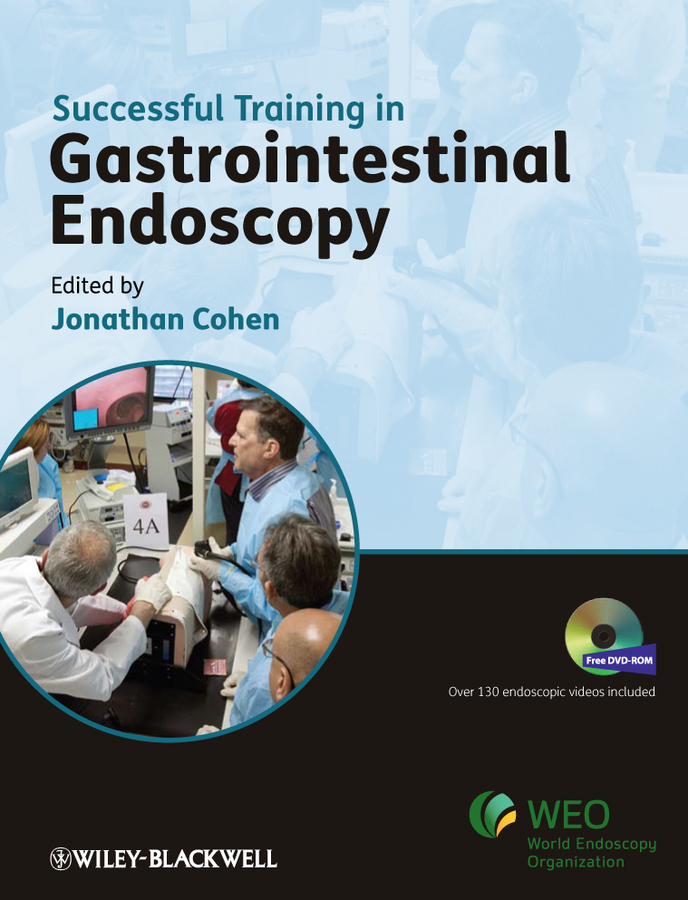
Endoscopy is the primary diagnostic method for GI complaints and is replete with an ever expanding array of therapeutic capabilities. Successful Training in Gastrointestinal Endoscopy will provide all gastroenterologists with the exact set of skills required to perform endoscopy at the highest level. GI trainees will find it a crucial primer for learning endoscopy; teachers will find ita guide to understand how best to develop the expertise of their students; and experienced practicing gastroenterologists will find it a useful refresher tool to brush up on their existing endoscopic skills and to familiarise themselves with new procedures, including issues of safety and competence while performing them. With contributions from internationally recognized leaders in endoscopy education and an endorsement by the World Organisation of Digestive Endoscopy, each chapter will examine the specific skill sets and procedure relatedtasks which must be mastered when learning a particular technique, including:Specific descriptions of accessories required Standard training methods for the procedure Optimal utilization of novel learning modalities such as simulators Quality measures and objective parameters for competency Available tools for assessing competency once training has been completed In addition to the 400high-quality, outstanding colour photos, the book will come with a DVD containing over 130 annotated teaching videos of both actual procedures and ex-vivo animal model simulations. These videos will illustrate, in a step by step fashion the proper techniques to be followed, highlighting clinical pearls from the experts and the most common mistakes to avoid. Successful Training in Gastrointestinal Endoscopy will be a key purchase for all gastroenterologists, whether in training or experienced, to allow them to develop and perfect their endoscopic skills. It will be a particularly useful guide for those interested in mastering the latest new techniques and procedures and an essential reference for teachers of endoscopy and students alike. INDICE: Preface. Section 1: The evolution of basic principles and practice. 1 Training for Endoscopy: A Historical Background (Jonathan Cohen and David A. Greenwald) 2 How Endoscopy is Learned: Deconstructing Skill Sets (Gerald M.Fried and Kevin Waschke). 3 Training to Become a High Quality Endoscopist: Mastering the Non Procedural Aspects (Sahar Ghassemi and Douglas O. Faigel). Section 2: Training in the major endoscopic procedures. 4 EGD (Lauren B. Gerson and Shai Friedland). 5 Colonoscopy (Robert E. Sedlack). 6 Endoscopic Ultrasound(Thomas J. Savides and Frank G. Gress). 7 ERCP (Joseph Leung and Brian S. Lim). 8 Capsule Endoscopy (Felice Schnoll-Sussman and David E. Fleischer). 9 DeepEnteroscopy (Patrick I. Okolo III and Jonathan M. Buscaglia). 10 Choledoscopyand Pancreatoscopy (Jeffrey H. Lee and Peter Kelsey). 11 Principles of Electrosurgery (David L. Carr-Locke and John Day). 12 The Use of Fluoroscopy for Gastrointestinal Endoscopy (Douglas G. Adler). 13 Endoscopy in Children (Michael A. Manfredi and Jenifer R. Lightdale). Section 3: Learning specific techniques. 14 Contrast Enhanced Endoscopy: Chromo and Optical Contrast Techniques (AnnaM. Buchner, Prateek Sharma, and Michael B. Wallace). 15 Hemostasis (Brian J. Dunkin, Kai Matthes, and Dennis M. Jensen). 16 Luminal Dilation Techniques (Strictures, Achalasia, Anastamotic, IBD) (Syed M. Abbas Fehmi and Michael L. Kochman). 17 Foreign Body Extraction (Gregory A. Coté, Steven A. Edmundowicz, andSreenivasa S. Jonnalagadda). 18 EMR and ESD (Juergen Hochberger, Elena Kruse,Detlev Menke, Edris Wedi, SongSa Dammer, P. Koehler, and K.F. Buerrig). 19 Mucosal Ablation Techniques (John A. Dumot, Bruce D. Greenwald, and Virender K.Sharma). 20 Complicated Polypectomy (Jerome D. Waye and Yasushi Sano). 21 Natural Orifice Translumenal Endoscopic Surgery (NOTES) (Kai Matthes, Mark A. Gromski, and Robert Hawes). 22 Bariatric Endoscopic Procedures (Sohail N. Shaikh,Marvin Ryou, and Christopher C. Thompson). 23 Closure of Defects (G. S. Raju). 24 Enteral Stenting (Peter D. Siersema). 25 The ERCP Management of Complicated Stone Disease of the Bile Duct and Pancreas (Nithin Karanth, Jonathan Cohen, and Gregory Haber). 26 The ERCP Management of Malignancy: Tissue Sampling, Metal Stent Placement and Ampullectomy (Douglas A. Howell). 27 Sphincter of Oddi Manometry (Evan L. Fogel, Stuart Sherman, and Glen A. Lehman). 28 PseudocystManagement (Michael J. Levy and Todd H. Baron). 29 Enteral Access Techniques:Percutaneous Endoscopic Gastrostomy and Jejunostomy (James A. DiSario). 30 The Endoscopic Management of Immediate Complications of Therapeutic Endoscopy (David A. Greenwald and Martin L. Freeman). Section 4: Challenges for the Future. 31 Assessing Manpower Needs in Gastroenterology and Digestive Endoscopy: Lessons form the Past and Implications for the Future of Endoscopic Training (Girish Mishra and Alan Barkun). 32 Providing Resources and Opportunities for Retraining for Practicing Endoscopists (John L. P
- ISBN: 978-1-4051-9663-5
- Editorial: Wiley-Blackwell
- Encuadernacion: Cartoné
- Páginas: 416
- Fecha Publicación: 27/05/2011
- Nº Volúmenes: 1
- Idioma: Inglés
